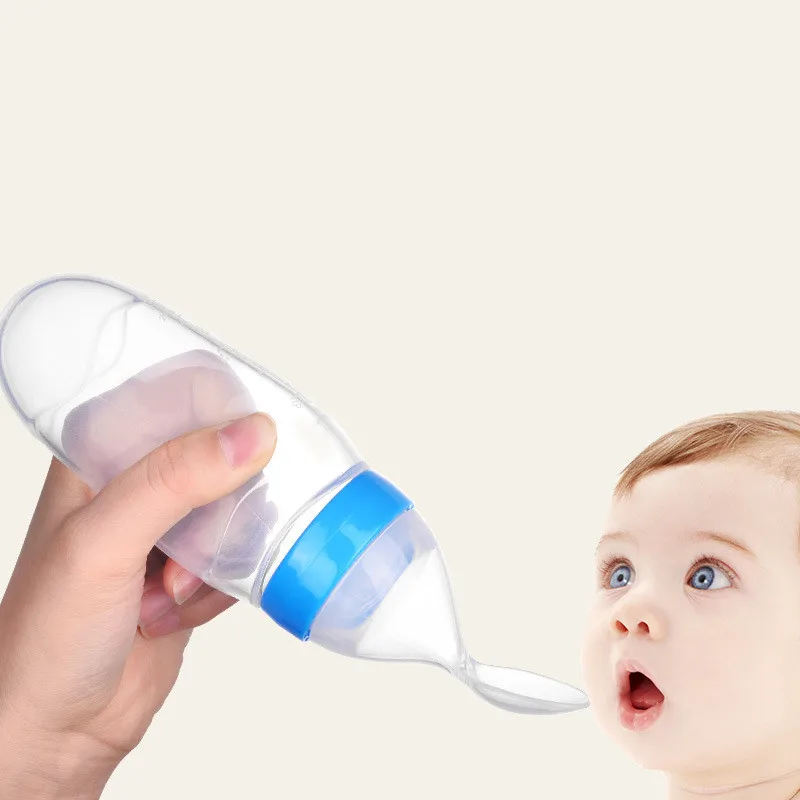My baby is gassy after every feeding
What's causing gas in my breastfed baby?
Image SourceWe’ve all heard the sayings, “breast milk is the best milk,” “it’s the ultimate baby food,” and “breast milk is liquid gold.” Experts agree; breast milk is the gold standard for infant nutrition. It provides your baby with the calories, fats and nutrients needed for growth, and also secures important immunities to protect from illness. No other infant feeding substitute can measure up to breast milk.
If breast milk is the “foundation of life” and so great for my baby, why is he so fussy and gassy? Is he allergic to my milk? Could he be allergic to my milk? What am I doing wrong?
These are common questions and fears amongst breastfeeding mothers. Some might even give up on breastfeeding out of fear that their milk is the cause of their baby’s tummy problems.
Let’s consider some reasoning behind your baby’s fussiness and gas. Gas is a normal part of the gastrointestinal (GI) system, and we all have gases in us from time to time. For breastfed babies, gas might be caused by eating too fast, swallowing too much air or digesting certain foods. Babies have immature GI systems and can frequently experience gas because of this. Pains from gas can make your baby fussy, but intestinal gas is not harmful.
Many mothers become concerned about how their diet contributes to their baby’s gas and fussiness. There is limited scientific research proving that certain foods in a breastfeeding mother’s diet cause intestinal issues in their babies. Some babies might react to particular foods in mom’s diet, but this doesn’t mean there’s a special list of foods out there for moms to avoid while breastfeeding.
Most babies tolerate the food consumed by their mothers, but it’s important to keep a close eye on patterns. If you notice that each time you eat something your baby becomes fussy, try avoiding the food for a while and see what happens. Many mothers have reported foods such as kale, spinach, beans, onions, garlic, peppers or spicy foods cause infant gas, while many babies tolerate these foods just fine.
While most foods won’t cause GI issues in breastfed babies, we do know that any foods containing cow milk protein are the most commonly reported food substance to cause gas and fussiness in infants. Some babies might experience a temporary intolerance to dairy from mom’s diet, but most will begin to tolerate cow milk proteins once they get older and move out of infancy.
If your baby has a true allergy to milk proteins, you might notice symptoms including dry/irritated skin, rashes, colic, persistent gas, fussiness and green stool with mucus or blood. If your breastfed baby is diagnosed with a true milk protein allergy, your healthcare provider might recommend a restricted diet while breastfeeding.
What can I do to help my baby with gas?- Make sure your baby has a good latch so he doesn’t swallow too much air.
- Burp him throughout the feedings to help get rid of the gas.
- Try not to let your baby overfeed or feed too quickly.

- Keep track of when your baby is gassy and look back at your diet. Try to learn which foods work and don’t work for you and your baby, and remember, each baby is uniquely different.
- If you have further concerns regarding your baby’s feeding, infant gas or increased fussiness, be sure to discuss these with your baby’s pediatrician and/or a lactation consultant.
Each year during the first week of August, over 120 countries across the globe come together to celebrate World Breastfeeding Week. During this week, public health organizations work to publicly encourage breastfeeding in an effort to improve the health of babies around the world. This year’s theme is “BREASTFEEDING: Foundation of Life.”
To learn more about Texas Children’s Lactation Support Services, Milk Bank (Lab) Services or breastfeeding services offered at Texas Children’s Pavilion for Women, please follow the respective links.
Got a Gassy Baby? | What To Do When Your Baby is Gassy
Posted on
It’s perfectly normal for your baby to have gas; their digestive systems are brand new, after all—and very small! In this article, we’ll go over all the need-to-knows:
- Symptoms of gassiness;
- How to relieve your little one’s gas;
- What foods (in breastfed babies) lead to more gas;
- And when to call your doctor.

Babies usually experience gas troubles almost right away, even after only a few weeks of life. Most infants grow out of it by around four to six months of age—but sometimes, it can last longer.
Most infant gas is simply caused by swallowing air while feeding. Other times, though, it can be caused by sensitivities that could be affected by a breastfeeding mom’s diet or a certain type of formula. Here’s how to tell if your baby is gassy:
You notice that your baby is fussy for about an hour or so per day. Again, baby gas is normal! But if you notice it every single day with no sign of improvement, it’s time to call your doctor.
Your baby seems unhappy most of the time. This is a good indicator that your baby’s gas is above a normal newborn gas level.
Your baby isn’t eating or sleeping well. This can have a lot of different causes, but gas is definitely a common one.
When your baby cries, you notice that they get red in the face, or they seem like they’re in pain.
Your baby is squirming a lot. If your baby seems uncomfortable, is squirming around, or pulling their legs up to their chest, it could be a sign of gas.
Remedies for a Gassy BabyHere are several home remedies you can try to help relieve your baby’s excess gas!
Burp Them Twice
Since swallowing air while feeding is the most probable explanation for newborn gas, burping them twice is a great and simple thing to try. Even giving your baby some gentle back pats during feeding can go a long way. A lot of times, if your baby turns away from the breast or bottle in the middle of feeding, it’s not because they’re full—it’s because the gas is making them uncomfortable!
Keep Them Upright
Try to feed your baby (however you’re feeding them!) in a very upright position. This will help minimize the amount of air they’re swallowing. If you’re bottle feeding, you can try an anti-gas nipple to better control the flow of milk. Also be sure to avoid shaking the bottle too much, which can create extra bubbles.
If you’re bottle feeding, you can try an anti-gas nipple to better control the flow of milk. Also be sure to avoid shaking the bottle too much, which can create extra bubbles.
Learn Their Hunger Cues
Crying, of course, can be very unpredictable. But, if you can, try to feed your baby before they start crying. Babies swallow a lot of air while crying; try to learn their hunger cues as early on as possible, so you can get them fed before they cry.
Baby Bicycles
Lay your baby on their back, and gently cycle their legs toward their tummy. This motion will help manually push all the trapped air out of their tummy. You can also try gently pushing their knees to their chest, holding the position for 10 seconds, releasing, and repeating.
Tummy Time
Tummy time is great for helping your baby strengthen the muscles they need to lift their head. These same muscles will eventually help them crawl and walk! Also, the gentle pressure on their tummy can help relieve their gas. Some babies spit up if they’re put on their tummies too soon after eating, so it’s best to wait 20–30 minutes after they’re done eating. Remember never to put your baby to bed on their stomach—this increases their risk of sudden infant death syndrome.
Some babies spit up if they’re put on their tummies too soon after eating, so it’s best to wait 20–30 minutes after they’re done eating. Remember never to put your baby to bed on their stomach—this increases their risk of sudden infant death syndrome.
There has been some research which suggests that the foods in your diet could make your baby gassy if you’re breastfeeding. The evidence isn’t conclusive yet, so be sure to try other things (like the tactics mentioned above!) first. If they’re still gassy, and you notice that they get gassier when you eat certain foods, there’s no harm in cutting that food out of your diet to see if it helps.
You can work with your doctor, too, to nail down foods that might be causing the gassiness. Some common gas-inducing foods include:
- Cruciferous veggies like cabbage, brussels sprouts, and cauliflower;
- Dairy and eggs;
- And meals that are very spicy, onion-y, or garlic-y.

Basically, anything that makes you gassy could be making your baby gassy as well!
When to Call Your DoctorIt’s always a good idea to consult your doctor about what’s going on, even if it doesn’t seem like a big deal. There are, however, a few signs you should be on the lookout for. If you notice any of the following, call your doctor right away.
- Your baby isn’t gaining weight
- Your baby often doesn’t want to eat or is difficult to feed
- Your baby seems constipated or has a hard time with bowel movements
- Your baby has an allergic reaction
For more expert baby tips and advice, check out the rest of our blogs!
how to distinguish from gaziki, symptoms, what to do and how to help when intestinal colic begins during breastfeeding
From the age of four weeks, my son began to cry almost every evening at the same time. Yes, so bitter that I wanted to cry with him.
Ksenia Petrova
doctor, mother, survivor of colic
Author profile
No matter what my husband and I did at that time, he would not calm down. After about an hour, the crying stopped, and the son was again the calmest child in the world. We thought that we were doing something wrong: I needed to change either my diet or my daily routine. But the pediatrician explained that it was colic, and everything would go away on its own. nine0003
After about an hour, the crying stopped, and the son was again the calmest child in the world. We thought that we were doing something wrong: I needed to change either my diet or my daily routine. But the pediatrician explained that it was colic, and everything would go away on its own. nine0003
Intestinal colic is diagnosed in 30% of children in the first four months of life. To save a child from suffering, parents are ready to give any money. And this is often used by charlatans, manufacturers of biological supplements and infant formula.
What is intestinal colic in newborns
Intestinal colic is cramping pain in the abdomen. During an attack, the baby behaves restlessly and cries. At the same time, the rest of the time he is calm and looks healthy.
The term "colic" was introduced by the American pediatrician Morris Wessel. He noticed that some healthy children cried more than others. The pediatrician decided to call this phenomenon colic. There was no talk of any illness. nine0003
nine0003
How long does colic last in newborns
In total, colic lasts up to three hours a day. Some parents think that the baby is crying all the time. Therefore, pediatricians recommend keeping a diary with the time of each episode of crying. In it, mark the beginning, end of crying and the reason. At the end of the day, count how much the child cried in total and separately - how much he cried for an unknown reason.
Baby crying diary
| Beginning and end of crying | Total, minutes | Cause |
|---|---|---|
| 05:33 - 05:46 | 13 | Dirty diaper |
| 08:14 - 08:57 | 43 | Fright |
| 11:00 - 11:22 | 22 | Hunger |
| 15:13 - 15:20 | 7 | Dirty diaper |
| 16:49 - 17:15 | 26 | Cause unknown |
| 19:38 — 21:02 | 24 | Other known cause |
| 23:00 - 23:20 | 20 | Hunger |
| Total | 155 minutes | |
| Crying for unknown reason | 26 minutes |
05:33 - 05:46
Total
13 minutes
Cause
Dirty diaper 9000 3 08 08
0114
only
43 minutes
reason
Fight
11:00 - 11:22
22 minutes
Reason
Hunger
15:13 - 15:20
only
7 minutes
Reason
Dirty diaper
16:49 - 17:15
Total
26 minutes
Reason: 38 - 21:02
Total
24 minutes
Reason
Another known reason
23:00 - 23:20
total
20 minutes
Reason
hunger
total
155 minutes
Crying for an unknown reason
26 minutes
The diary will help you calculate how many minutes a day crying lasts and what is its cause. Download a copy of this plate and fill it out online or in print form. nine0003
Download a copy of this plate and fill it out online or in print form. nine0003
When does colic start in newborns
After a natural birth, colic in babies can begin as early as three weeks. They occur during feeding or 20-30 minutes after it. With a caesarean section, colic may begin a week earlier. Pediatricians suggest that this is due to a lack of microorganisms in the child's gastrointestinal tract. During natural childbirth, they enter the baby's body from the mother's birth canal, but this does not happen during caesarean section.
Gut Microbiota Development and Health Implications - PubMed
Causes of Colic
The exact cause of infantile colic has not been established.
The causes of colic in formula-fed and breast-fed children are the same. They do not depend on gender and skin color, whether the child is full-term or not. And they are found not only in children, but also in the cubs of other mammals. Puppies, for example, can take a pose with an arched back and tucked paws and whine, even if their mother is nearby.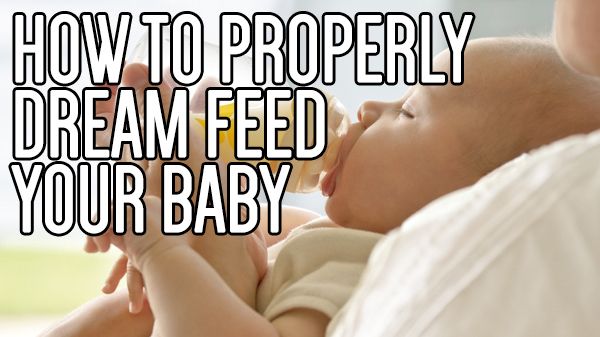 nine0003
nine0003
Which children are more likely to have colic, article in UpToDate
Natural dog health remedies: symptoms of colic in puppies
Scientists suggest that colic occurs for several reasons.
Immaturity of the nervous system. Up to three months, nerve impulses may enter the digestive system chaotically. As a result, the muscles in the walls of the stomach and intestines sometimes contract incorrectly. It's like pedaling a bicycle with one foot forward and the other back. Due to the disconnected work of the intestine, painful spasms occur. nine0003
Development of the digestive system, article in Pubmed
From three to five months, the supply of nerve impulses improves, the muscles begin to work synchronously, and spasms become less.
Enzyme deficiency. Food cannot be digested without special proteins - enzymes. They break down food into simpler constituents. In the first months of life, the salivary glands, stomach, pancreas and small intestine produce few enzymes. Therefore, their number is not always enough to digest food. Poorly digested food enters the large intestine, where it is processed by bacteria. The fermentation process begins. Gas is formed, and the more, the more it presses on the intestines from the inside. Gas formation leads to discomfort and pain. When gases leave, the child becomes easier. nine0003
Therefore, their number is not always enough to digest food. Poorly digested food enters the large intestine, where it is processed by bacteria. The fermentation process begins. Gas is formed, and the more, the more it presses on the intestines from the inside. Gas formation leads to discomfort and pain. When gases leave, the child becomes easier. nine0003
Parental alarm. Scientists have noticed that children of anxious parents were more likely to be diagnosed with intestinal colic.
Maternal Anxiety Disorders and Baby Crying, Pubmed article
Children are empaths, reflecting the inner state of others, even if they try to hide it. For example, if the mother is often sad, the child will become anxious. Older children are able to express feelings in different ways, and babies, experiencing negative emotions, cry.
At the same time, the frequency of colic is in no way connected with parental experience. The fifth child in the family may have colic, even if the previous four children did not have them, and the parents are sure that they know all the secrets to preventing colic. nine0003
nine0003
Migraine. Infantile colic is considered as a reaction to pain. The source of pain can be not only the stomach, but also the head. In 2013, it was found that children who were diagnosed with migraine were more likely to suffer from colic in infancy. And in 2014, researchers concluded that colic may be an early manifestation of migraine. There is also a suggestion of a feedback loop: children who have had colic are more likely to have migraines in the future.
Relationship between childhood migraine and colic, article in Jama
Maternal smoking and nicotine replacement therapy. A large study confirmed the relationship between maternal smoking and colic in children. We are talking about both the mother's smoking during pregnancy and the inhalation of tobacco smoke by the child. Nicotine interferes with the passage of nerve impulses to the intestines, causes inflammation of its mucosa and reduces blood flow to the gastrointestinal tract. As a result, colic occurs.
As a result, colic occurs.
Pediatrics: how maternal smoking increases the risk of infantile colic
Allergy to cow's milk proteins. Cow's milk protein can enter the child's body directly from artificial formulas or through breast milk from the mother. In the blood, the protein reacts with antibodies. As a result of this reaction, substances are formed that can damage intestinal cells. Inflammation begins in it, which becomes a source of pain. In a European study, 12,050 children with colic were examined for allergies to cow's milk protein. Among them were children on artificial and natural feeding. Allergy was confirmed in 1% of children. nine0003
Another study found that only 1.7% of mothers get enough cow's milk protein into their breast milk to cause an allergy. This means that even if the child has an allergy, in most cases the mother can continue to drink cow's milk.
Cow's milk protein allergy is easily missed or confused with another disease. Most often, with an allergy in a child, blood appears in the stool, visible to the naked eye. Less common symptoms:
Most often, with an allergy in a child, blood appears in the stool, visible to the naked eye. Less common symptoms:
- Excessively vivid colic: bouts of intense, inconsolable and prolonged crying.
- Delayed weight gain.
- Mid-feeding cry with early sucking stop and malnutrition.
- Skin rash: if it develops, take the child to the pediatrician.
Diagnosis and treatment of protein allergy in children, a practical guidePDF, 383 KB
Does mom's diet affect colic. To confirm the diagnosis, the doctor may prescribe a cow's milk-free diet to the mother, a blood test for antibodies and a fecal occult blood test to the child. nine0003
Changing diet for colic - Cochrane
How to tell if a baby has colic
Colic appears to be part of normal baby development. Outside the seizure, the baby looks healthy and happy. Therefore, the following symptoms appear only during colic.
How to understand that a child has colic:
- Crying starts suddenly, more often in the evening.

- The face turns red and the skin around the lips turns pale.
- Abdomen swollen and tense. nine0268
- The child's legs are bent and brought to the stomach, and during especially strong crying they can be tense and straightened, cold to the touch.
- Fingers clenched, arms extended and tense.
- Back arched.
American pediatrician and scientist Ronald Barr about six characteristics of crying during colic in children and how parents can survive this and not harm the child
Relief can come after the child poops. At the same time, gases are released and spasms associated with improper coordination of the intestines stop. Sometimes colic can end just after the baby has farted. nine0003 What colic looks like in a newborn: the baby is screaming, the lips and skin around the mouth are pale, the hands are clenched into fists, the legs are brought to the stomach. Source: Luck Club
Colic can occur in the form of contractions: the child cries, then calms down for a few minutes and starts screaming again. And so in a circle.
And so in a circle.
Less than 5% of children have colic due to illness. Then other alarming symptoms appear in the child:
- The temperature is above 38 °C.
- Diarrhea more than 8-10 times a day. nine0268
- The child does not poop for three days or more.
- Blood in the stool: streaks of blood, jelly-like red or crimson impurities, black loose stools.
- Increased regurgitation and vomiting.
- Breathing rate less than 40 breaths per minute, wheezing and whistling may be heard on inspiration, blueness around the mouth.
- Any rash on the skin.
- The child is less active than usual, eats less.
- No matter what you do, you cannot calm your child for more than three hours. nine0268
How to distinguish colic from gas in newborns. To understand that discomfort can be associated with gases, you can see the swollen and tense belly of the baby.
Excessive flatulence may be associated with colic: for example, relief in a child may occur after the child poops. At the same time, gases are released and spasms associated with improper coordination of the intestines stop. Sometimes colic can end just after the baby has farted. Therefore, to help a child with colic, gas tubes are sometimes used. nine0003
At the same time, gases are released and spasms associated with improper coordination of the intestines stop. Sometimes colic can end just after the baby has farted. Therefore, to help a child with colic, gas tubes are sometimes used. nine0003
First aid for a child with colic
You can try one of the ways to calm the child for a few minutes. If there is no effect, go to the next one:
- Offer him a pacifier.
- Turn on the tummy.
- Ride in your stroller or car.
- Carry your baby in your arms, in a sling or equivalent.
- Rock while standing, in a rocking chair, sitting on a fitball.
- Change location, shade the room. nine0268
- Swing on the children's swing.
- Take a warm bath.
- Stroke your tummy.
- Turn on heartbeat audio.
- Turn on white noise.
- Sing a lullaby or talk to your baby.
- Swaddle loosely.
How to cope with colic, an article in KidsHealth
Pathways. org: how to properly lay the baby on the tummy and how it is useful
org: how to properly lay the baby on the tummy and how it is useful
If all else fails, you can put a gas tube on the child. You can buy it in a pharmacy, specify what it is for a baby. It is worth using this method when other methods do not work, and the child's stomach is still swollen and tense.
Lubricate the tip of the gas tube or enema with petroleum jelly or other oil and gently insert it in a circular motion to a depth of three centimeters. You will hear when the gases begin to come out. At the same time, the child may begin to poop. Soon after a bowel movement, the baby will calm down. nine0003
/ya-rodilsya/
From sterilizer to infant carrier: baby shopping list
You will eventually find a method that is right for your baby. But be prepared that it will not always work.
But be prepared that it will not always work.
How it was with us
My son's colic began from the fourth week and was almost every day, always in the evenings, at the same time. At first, it helped well to rock in a chair to a movie. Worked for a week. On New Year's Eve, the garlands on the Christmas tree came in well, for another week. nine0003
There was a period when nothing helped. My husband and I took turns waiting out this time in the evenings with the baby in our arms. The sling helped from time to time. Then I randomly found one song - Alexey Kosenko, Rain with Me Original Mix - where the piano played and there were sounds of rain. I turned it on on repeat and rocked the child while standing in this rhythm. It helped for two whole weeks. The song still plays in my head sometimes.
If the baby won't stop crying:
- Call a loved one who can support you or babysit. At this time, you can rest. Children are great at reading emotions - if you rest and calm down, then the child may stop crying.
 nine0268
nine0268 - If all else fails, put your baby on their back in a crib without blankets or soft toys, go out and close the door. For 10 minutes, do something that will help you relax and calm down. For example, take a shower, have a snack, read or listen to music. After that, return to the baby and try to calm him down again.
Do not shake the baby during colic. In children under two years of age, the neck muscles are not sufficiently developed, the walls of the vessels of the brain are fragile, and the head is disproportionately large in relation to the body. Therefore, when shaking, the brain moves inside the skull, which can lead to injury. This is how shaken baby syndrome occurs. nine0003
The Period of PURPLE Crying: how shaken baby syndrome develops and causes
Don't blame yourself or your child for crying. Find a way for yourself to relax and know that the child will outgrow this period.
How to help a newborn with colic
There are few high-quality studies on the treatment of colic. Those that exist say that most methods are no more effective than placebos. As a criterion for the effectiveness of the method, scientists usually take the time by which the crying of the child is reduced. It is believed that if a treatment reduces crying time by less than 30 minutes a day, then it is ineffective. nine0003 Among the effective methods are only probiotics with Lactobacillus Reuteri and diet. Other methods reduced crying time by less than 30 minutes. Source: Pubmed Among the effective methods are only probiotics with Lactobacillus Reuteri and diet. Other methods reduced crying time by less than 30 minutes. Source: Pubmed
Those that exist say that most methods are no more effective than placebos. As a criterion for the effectiveness of the method, scientists usually take the time by which the crying of the child is reduced. It is believed that if a treatment reduces crying time by less than 30 minutes a day, then it is ineffective. nine0003 Among the effective methods are only probiotics with Lactobacillus Reuteri and diet. Other methods reduced crying time by less than 30 minutes. Source: Pubmed Among the effective methods are only probiotics with Lactobacillus Reuteri and diet. Other methods reduced crying time by less than 30 minutes. Source: Pubmed
Nutrition correction. The method helps children who have colic due to allergies. In this case, the doctor excludes allergen foods from the mother's diet. A bottle-fed baby can be transferred to a deep hydrolyzate. The body of a child with an allergy to cow's milk protein cannot break down this protein. Therefore, in hydrolyzed mixtures, milk protein is already split. Such an experiment lasts a week, if there is no effect, the previous diet returns. The effectiveness of the diet for treating infantile colic in a situation where the child does not have allergies has not been proven. nine0003
Such an experiment lasts a week, if there is no effect, the previous diet returns. The effectiveness of the diet for treating infantile colic in a situation where the child does not have allergies has not been proven. nine0003
Probiotics for breastfed babies. These are live microorganisms that alter the intestinal microflora and aid in digestion. There is speculation, as yet without conclusive evidence, that the gut microflora of infants with colic is different from that of children without colic. Therefore, it is believed that microorganisms can improve digestion, reduce gas and reduce pain.
What to do? 07/02/20
The doctor prescribed dietary supplement along with the usual medicine. This is fine? nine0003
But it's not that simple:
- It is not known how many of which microbes each person should have.
- Research is carried out with different types of microorganisms. Each type can have its own effect.
 Therefore, the results cannot be generalized to all probiotics.
Therefore, the results cannot be generalized to all probiotics. - There are few data on the safety of probiotics. Only 2% of studies state that the product is safe.
- Many probiotic studies are sponsored by infant formula manufacturers and drug companies. This raises doubts about the objectivity of the results obtained. nine0268
In 2017, a probiotic containing Lactobacillus Reuteri strain DSM 17938 was proven to be effective and safe. In breastfed babies, it reduces the duration of crying by an average of 50 minutes per day. By other criteria, this probiotic is no more effective than a placebo. Therefore, you can use the drug only as directed by a doctor. The probiotic is prescribed for a month to evaluate the effectiveness. With a positive effect, the doctor can extend its intake for another three months. nine0008 800 R
average price for BioGaia and Rela Life probiotics containing Lactobacillus Reuteri. You will need at least two bottles per month
Research on the effectiveness of the probiotic with Lactobacillus Reuteri in artificially fed children is just beginning.
Hydrolysed formulas for formula-fed babies. Studies show that hydrolyzed protein formulas reduce the duration of crying throughout the day. They switch to a new mixture gradually: it is added to the usual one within four days. This is continued until only a hydrolyzed mixture is obtained. nine0003
If the new formula helps relieve symptoms of colic, continue taking it for up to three to six months. After that, you can resume taking the usual mixture. This method can reduce crying by 37 minutes a day. But it can only be used as directed by a doctor. Incorrect selection of a new mixture can increase colic or cause allergies.
Baby colic: how to recognize and treat, article on the American Academy of Family Physicians website
Dealing with parental anxiety. This method does not reduce the duration of colic in any way, but in 9In 0% of cases, doctors recommend starting with it. If the words of a pediatrician do not help to cope with anxiety, then you can turn to a psychologist.
How to deal with anxiety
Veronika Khlebnikova
existential psychologist, blogger and mother of three children
To calm a child, you must first of all cope with your anxiety. I often communicate with parents who are not sure that they are doing the right thing in relation to the child. They think they are not up to the task. At such moments, you need to understand where your anxiety comes from. Then it will be easier for you to get rid of it. nine0003
What does not help with colic
Switching from breastfeeding to artificial feeding. No treatment algorithm recommends eliminating or reducing breastfeeding. This leads to the rapid disappearance of milk, increases the tension of the intestines of the child and weakens his immunity.
120,000 R
amount per year that artificial feeding can cost
The duration of baby crying may decrease when switching from breastfeeding to artificial feeding. But this is because breast milk is digested faster. As a result, the baby feels hungry more often and gets new portions of milk more often - it seems that during sucking he screams more often. And after the transfer to the mixture, he sleeps longer, which makes it seem that he has become better. nine0003
But this is because breast milk is digested faster. As a result, the baby feels hungry more often and gets new portions of milk more often - it seems that during sucking he screams more often. And after the transfer to the mixture, he sleeps longer, which makes it seem that he has become better. nine0003
Colic is three to five months, and breastfeeding should continue longer. The decision to cancel it must be taken very carefully.
Acid suppression therapy. Proton pump inhibitors such as omeprazole are not effective in treating infant colic. Their effectiveness is not higher than that of placebo.
Painkillers. Evidence for the effectiveness of pain relievers for treating infantile colic is sparse and biased. Their use is not recommended without a doctor's prescription. nine0003
Homeopathic preparations. They are used at very low doses, their mechanism of action is not clear, and their effectiveness has not been proven.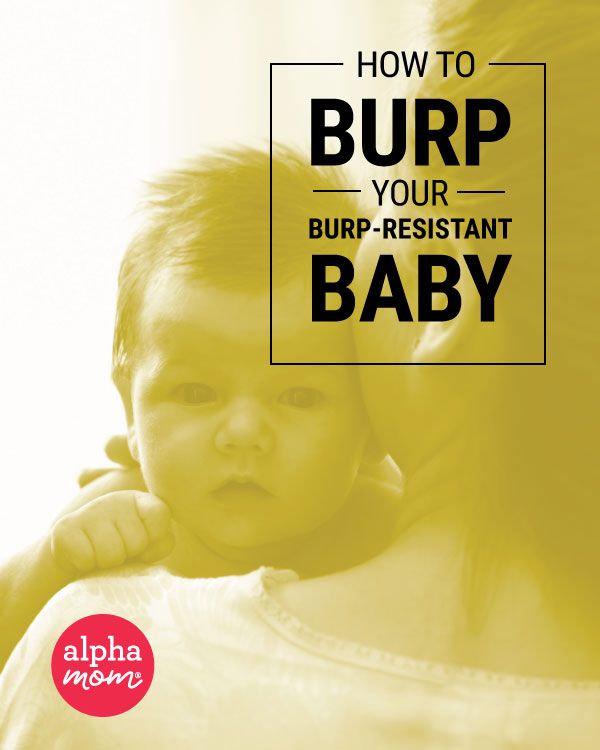 They are not recommended for the treatment of colic in children.
They are not recommended for the treatment of colic in children.
Use of homeotic remedies for infantile colicPDF, 260 KB
Drinking water. Breast milk is more than 80% water. It is enough to quench the thirst of a child up to four to six months, even in the heat. Supplementing babies with water puts them at risk of diarrhea and malnutrition. It can also cause the baby to suckle less at the mother's breast, producing less and less milk, and stop breastfeeding too soon. nine0003
WHO: why is it harmful to give water to infants
Phytotherapy. Few studies have been done on the effectiveness of various herbs. Chamomile, peppermint, lemon balm, licorice, and dill water are reportedly no more effective than placebo. Some herbs can be dangerous for a child and cause allergies. For example, fennel in large quantities can cause vomiting and impair the functioning of the baby's muscles. This is the same plant, from the essential oil of which "dill water" is made. nine0003
nine0003
Simethicone. This is a synthetic substance that reduces bloating. Included in, for example, "Bobotika", "Espumizan baby", "Sub simplex". Simethicone is not absorbed, it acts only in the intestinal lumen on gas bubbles, which causes them to disintegrate. No study has proven that the use of simethicone is effective in treating colic in children.
390 Р
average price per bottle of simethicone
If colic is mainly due to increased gas formation, then simethicone can help. You can only find out by trying. If after a week of taking you have not noticed any difference in the frequency and intensity of colic attacks, it is pointless to continue using it. nine0003
Tea for lactation. Hot drinks are generally not prohibited. It promotes the release of oxytocin, relaxes and calms. And it is easier for a calm mother to cope with a crying child. But herbal tea can be harmful for both mother and child. For example, fennel, lemon balm and sage reduce lactation. Carefully read the composition and recommendations for the amount of tea so as not to overdo it.
For example, fennel, lemon balm and sage reduce lactation. Carefully read the composition and recommendations for the amount of tea so as not to overdo it.
E-Lactanciya: compatibility of medicines and herbs with breastfeeding
Chiropractic, osteopathy. These are alternative medicine methods that use physical manipulations such as stretching and massage. Studies have shown that chiropractic and osteopathy are not effective for treating colic. The safety of these methods for children has not yet been proven.
Manipulative techniques for the treatment of infantile colic, article in Pubmed
Acupuncture, or acupuncture. Proponents of the method insert fine needles into the skin at certain points. They believe that the impact on these points restores vital energy, and pain goes away from this. Acupuncture is useless and is not recommended for treating colic. The safety of this method has also not been proven. nine0003
A review of the effectiveness and safety of acupuncture for colic in infants, article in Pubmed
When colic in newborns goes away three days a week, and ends by three months.

Rome IV Criteria: Functional Gastrointestinal Disorders in ChildrenPDF, 828KB
Since 2016, colic has been considered to last up to five months. After that, the baby begins to cry less often. If after five months the crying time has not decreased, you need to contact your pediatrician. nine0003
Prevention of colic in newborns
There is no method of prevention that would prevent colic. But proper feeding will help ease their flow and reduce the duration.
Keep your baby on your tummy for as long as possible before each feed. Start with two to five minutes, gradually increasing the time. By three months, the baby can lie on his stomach for about an hour a day.
Attach the baby correctly to the breast: not only the nipple, but also the areola should be in the mouth. nine0003
Mayo Clinic Feeding Position Slideshow
Carry your baby upright for 5 to 15 minutes after each feed to burp up any swallowed air. If feeding at night, lay the baby so that his head was raised.
If formula-fed, try using nipples and anti-colic bottles. Inside these bottles there is a valve that equalizes the pressure.
500 R
average price per anti-colic bottle
Colic is optional, 70% of children do not have it. If, even before the birth, the family tunes in to the fact that even if colic makes itself felt, they will stop sooner or later, then the first months of parenthood are more likely to pass calmer.
You can use a pillow or your free hand to lift your baby's head. The baby must grasp not only the nipple, but also the areola. Even in the horizontal position, the nipple is always full of milk. Air does not get into it. Source: philips.ruRemember
- Not everyone has colic.
- Colic is part of normal baby development.
- The exact cause of their appearance is not known.
- Treatment of colic begins with parental anxiety.
- More often than not, the treatment of colic does not cost anything - most therapies have not been proven to be effective.

- Colic ends in all children by a maximum of five months. It just needs to be experienced.
Colic - they pass! - articles from the specialists of the clinic "Mother and Child"
You can't confuse it with anything
A healthy child has been discharged from the maternity hospital, he is growing and making his loved ones happy. Yes, the baby sometimes cries a little, but what children do not cry! Moreover, over time, mom and dad get used to their new role and gradually understand what their baby needs. Yes, and the reasons for crying are usually simple: the child wants to sleep or, conversely, to communicate, he is cold or hot, in the end, he most often just needs to eat! Later, when colic begins, that crying of the first days and weeks of life will seem to parents only a slight irritation or whims. But mom and dad don’t know this yet and just rejoice at how their son or daughter is gaining weight and gaining strength. And suddenly out of the blue it starts! Usually in the afternoon, a child who was completely calm before that first frowns, wriggles, twists his mouth, grunts, then such a cry is heard that at the first moment especially tremulous parents clutch at their hearts. The baby presses the legs to the stomach, and often beats the air with his hands, his face turns red from crying, and his stomach tenses. And suddenly the child stops. Gone? No, almost immediately everything repeats again. And so at least half an hour in a row, and as a maximum - several hours a day. In the end, the child's strength ends and he falls asleep in exhaustion. Exhausted parents, too. The next day everything starts all over again. nine0003
The baby presses the legs to the stomach, and often beats the air with his hands, his face turns red from crying, and his stomach tenses. And suddenly the child stops. Gone? No, almost immediately everything repeats again. And so at least half an hour in a row, and as a maximum - several hours a day. In the end, the child's strength ends and he falls asleep in exhaustion. Exhausted parents, too. The next day everything starts all over again. nine0003
If you are very lucky, then such attacks will last only one or two times per evening for 30 minutes - 1 hour. On average, the attack lasts up to 3 hours. But there is a worse option: every day the strength, duration and frequency of screams will increase, until in the end the child starts screaming every two hours in the morning, and in the afternoon, and in the evening, and at night, of course. It will seem to parents that now this one is forever, but by 3 months babies are miraculously healed, only a few have colic that lasts up to 4-5 months (it’s good that they are already much less pronounced). That's what they are, infantile colic! nine0113 Well, from the point of view of doctors, colic is just paroxysmal pain in the abdomen, accompanied by severe anxiety of the child.
That's what they are, infantile colic! nine0113 Well, from the point of view of doctors, colic is just paroxysmal pain in the abdomen, accompanied by severe anxiety of the child.
Many years ago it was noticed that there is a certain regularity in the manifestation of colic, the so-called "rule of three" :
- Colic often begins by three weeks of life - yes, this is almost always the case.
- Lasts an average of about three hours a day - unfortunately, this is only an average. nine0268
- Usually found in children of the first three months of life - fortunately, this is true.
There is also a positive moment in colic : usually the general condition of the child with intestinal colic does not worsen: the child has a good appetite, he gains weight as it should, in the intervals between bouts of colic the baby is cheerful and looks as if nothing had happened. Against the backdrop of an endless ora, parents are already happy with every little thing. And since there are no other symptoms other than crying, then colic is not considered a disease. Doctors call them a functional disorder in the work of the gastrointestinal tract (this means that there is no structural disturbance in it, it’s just that the digestive system is not yet working quite correctly). nine0003
And since there are no other symptoms other than crying, then colic is not considered a disease. Doctors call them a functional disorder in the work of the gastrointestinal tract (this means that there is no structural disturbance in it, it’s just that the digestive system is not yet working quite correctly). nine0003
Have you read this far and become a little scary?
The best news: not all children have colic! There are lucky ones who only shrug their shoulders in surprise when asked if their child had colic.
The reason is not established
There is another interesting feature of colic: it is difficult to determine exactly why colic occurs. There are many reasons for this, and each baby can have his own:
- Enzymatic system of the gastrointestinal tract is not yet mature. Therefore, the food is not fully digested and too much gas is formed in the intestines, the gases stretch the walls of the intestine, hence the pain.

- The intestinal microflora is not yet fully established and changes frequently, again leading to excess gas and pain.
- The neuromuscular apparatus of the intestine is also not yet fully mature. As a result, intestinal motility and spasms increase.
- The baby swallows too much air during feeding (it is incorrectly attached to the breast or sucks too greedily). Air stretches the walls of the intestines, which is also painful for many children. nine0268
- Mom is breastfeeding and eating a lot of dairy products, and the baby is allergic to cow's milk protein. As a result of this allergy, the intestinal wall is damaged. Secondary lactase deficiency occurs, the child lacks the enzyme lactase, which breaks down milk sugar. Sugar ferments in the intestines, there are more and more gases and, as a result, pain occurs.
- The baby has an increased sensitivity of the intestinal wall to stretching. The child feels pain that another infant (or adult) will not pay attention to.
 nine0268
nine0268 - If the baby is bottle-fed, then the whole thing may be in the mixture. Most likely, it is not suitable for a child.
Well, if the cause of colic is some one and not very serious. For example, a baby swallows a lot of air during feeding. Then the colic will not be too pronounced. In addition, it is not difficult to eliminate this cause, you just need to adjust the feeding. As a rule, colic is quite tolerable as long as the child has functional immaturity of the gastrointestinal tract (for example, the microflora has not been established or there are few enzymes). The baby cries in the evening, even if for three hours, but 21 hours out of 24 he is quite calm. In the end, when every evening (or three or four times a week) the same scenario is repeated, you already get used to it. nine0003
But if there are several causes of colic at once or there is an allergy to cow's milk protein with lactase deficiency, then parents will fully feel what it is like when a child throws a tantrum every two hours.
To make it easier for the pediatrician to figure out what is most likely the cause of colic, parents should tell them as much as possible about their child. To do this, will have to keep a diary of colic and nutrition of the baby . By the way, some mothers are so addicted to these records that they continue to keep them even when the colic has already passed (just in case). Well, then they get used to the fact that there are no more colic, and calm down. nine0003
What should be recorded in the food diary:
- When colic occurs: before, during or after feeding, if after feeding, after what time.
- How long does colic last.
- Is there any rhythm in colic, do they occur at the same time or at different times.
- When colic is most pronounced (morning, afternoon, evening).
- How a mother feeds a child - breastfeeding or formula. If breastfeeding, then how many milliliters the baby eats in one feeding.
 Breastfeeding by the hour or free. nine0268
Breastfeeding by the hour or free. nine0268 - If the child is receiving formula, what kind, at what dosage and how often.
- What does a mother eat if she is breastfeeding.
What to do about it
Is it necessary to somehow examine a child with colic? Even if the doctor says that the baby has the most common colic, parents will still want to take a lot of tests and ultrasound of the abdominal cavity.
And it is clear that the more a child cries, the more mom and dad want to examine him .
Ultrasound usually shows that everything is in order with the structure of the child's internal organs (immaturity and allergy are not visible on ultrasound). But parents even from this are already calmer. In coprology (fecal analysis), some changes are possible, and in the analysis of feces for carbohydrates (it confirms lactase deficiency), carbohydrates will be increased. Microbiological examination of feces (sowing) does not bring clarity to the picture of colic.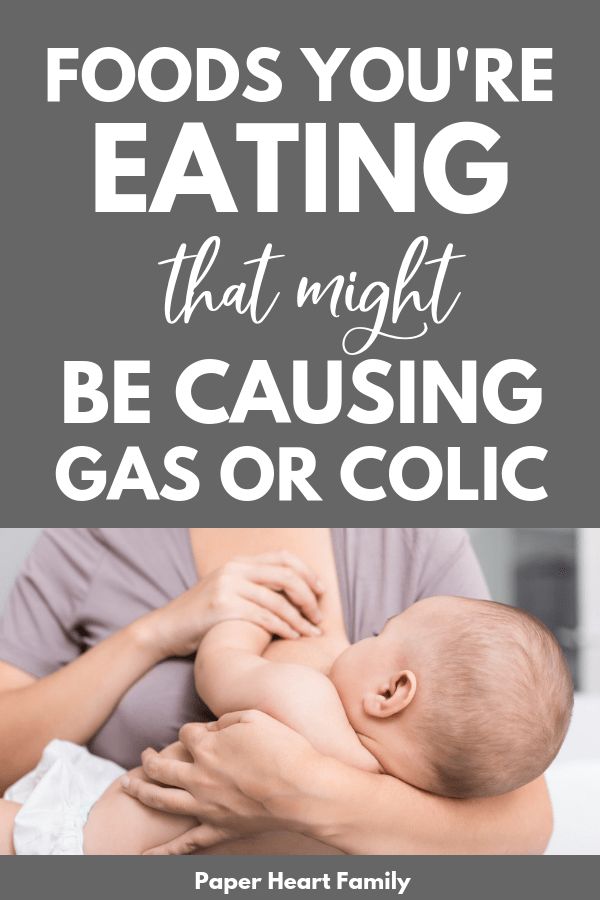 The composition of the microflora, and so on, may not yet be fully established, and against the background of increased gas formation, in addition, it will be changed. nine0003
The composition of the microflora, and so on, may not yet be fully established, and against the background of increased gas formation, in addition, it will be changed. nine0003
So what to do now? As already mentioned, colic disappears with age. Someone will say that you just need to be patient and wait. This, of course, is true, but when the baby cries and screams all the time, it affects the nervous system of everyone around. The situation in the house becomes nervous, the parents calm the baby with their last strength, and the mother also needs to feed the child, and walk with him, and cook food. Dad is also exhausted by endless screams and night vigils, and he is the breadwinner in the family, plus, if driving, he must concentrate on the road. In general, everyone needs rest, which means that colic needs to be dealt with somehow. nine0003
Let's say right away that there is no 100% effective treatment for colic: although many ways have been invented to deal with them.
Someone helps one thing, someone else, you will have to try almost all methods:
Proper feeding . If the mother is breastfeeding on demand, then feeding should not become erratic, especially if colic is aggravated during meals or immediately after it. The baby should not swallow air during feeding, so you need to make sure that he completely captures the areola. If the baby is bottle-fed, then the nipple should be age-appropriate (the hole for milk in it should not be very large). You can use special anti-colic bottles - they prevent the swallowing of air during feeding. Before feeding the baby, you can put it on your stomach for 10-15 minutes, this stimulates the intestines. After feeding, the child must be held upright so that he burps the air. But for some reason, colic often occurs even if all these rules are observed. nine0003
If the mother is breastfeeding on demand, then feeding should not become erratic, especially if colic is aggravated during meals or immediately after it. The baby should not swallow air during feeding, so you need to make sure that he completely captures the areola. If the baby is bottle-fed, then the nipple should be age-appropriate (the hole for milk in it should not be very large). You can use special anti-colic bottles - they prevent the swallowing of air during feeding. Before feeding the baby, you can put it on your stomach for 10-15 minutes, this stimulates the intestines. After feeding, the child must be held upright so that he burps the air. But for some reason, colic often occurs even if all these rules are observed. nine0003
Heat and massage . For some children, colic is relieved (or relieved) by putting something warm on their stomach or simply taking a warm bath. Someone helps just a diaper folded several times and ironed with an iron. But caring fathers wear someone for hours, attaching to their chest, or simply put the baby on their stomach, but, alas, there is no effect.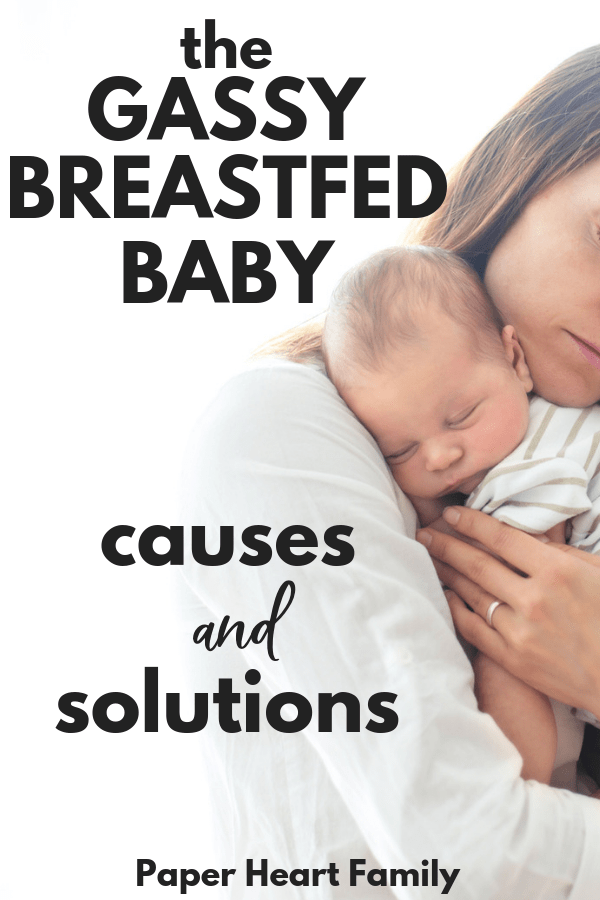 The same thing happens if you give the baby a light massage of the abdomen in a clockwise direction: it will not help, you can only guess. nine0003
The same thing happens if you give the baby a light massage of the abdomen in a clockwise direction: it will not help, you can only guess. nine0003
Mom's food . Pediatricians often recommend that mom exclude any dairy and sour-milk products (milk, cheese, cottage cheese, yogurt, kefir, ice cream) from her diet. Under the ban are products that, even partially, contain milk: for example, cookies, pastries. Well, women are no strangers to diets, especially since with severe colic in the crumbs, the mother will already agree to everything. Usually after 7-10 days you can see if the diet helps or not. If there are results, then it is most likely that the child is allergic to cow's milk protein and the mother will have to stay on a dairy-free diet for some more time. nine0003
Children's herbal teas and products with chamomile, fennel (they relieve intestinal spasm and improve flatulence) - the result is, again, the most opposite. But it is better not to give them yourself.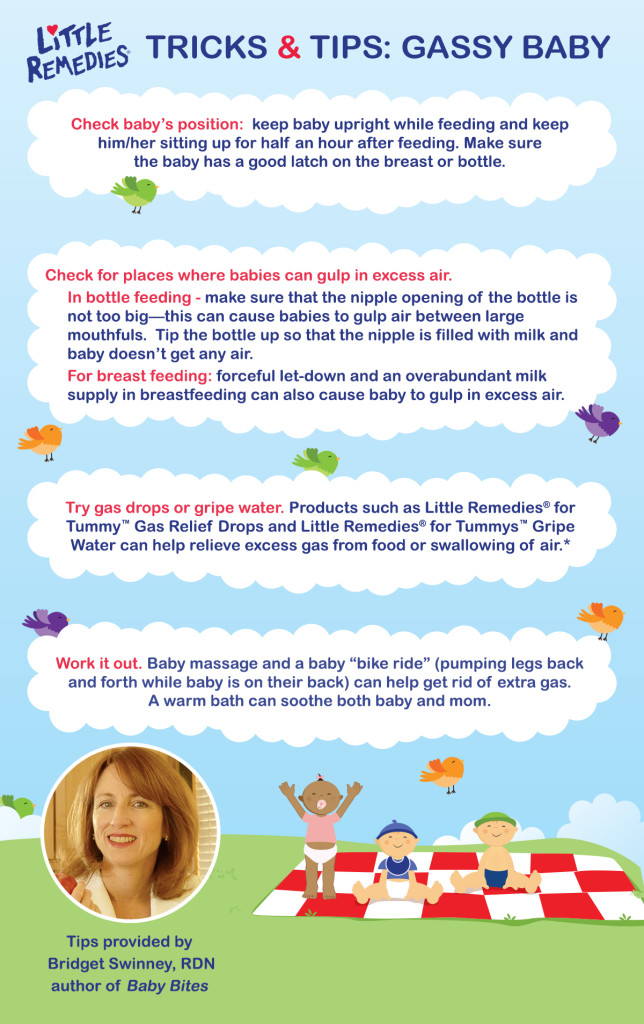 Herbs can also be allergic, which will only increase colic. What remedy is better to give (or not to give anything at all), the pediatrician will decide.
Herbs can also be allergic, which will only increase colic. What remedy is better to give (or not to give anything at all), the pediatrician will decide.
Drugs that destroy the walls of the gas bubble . Here, as with other methods, the effect is often temporary and not 100%. After all, these funds only relieve the symptoms, and the cause of gas formation remains. nine0003
Enzymes for lactase deficiency . If it is confirmed, then enzymes (lactase) help well. The main thing is that the cause of colic is established correctly.
Motion sickness, wheelchairs and driving . They always rocked children, but it’s just necessary to pump, and not shake the child like a pear. Violent shaking can cause a concussion.
Unconventional products . It sounds strange, of course, but some parents claim that the sound of a vacuum cleaner or a hair dryer calms a screaming baby well. nine0003
Another way is to sleep in the fresh air. There are such amazing babies who, for some reason, calm down perfectly in the fresh air in the evening, but as soon as their mother tries to return home, they instantly wake up and raise a cry.




